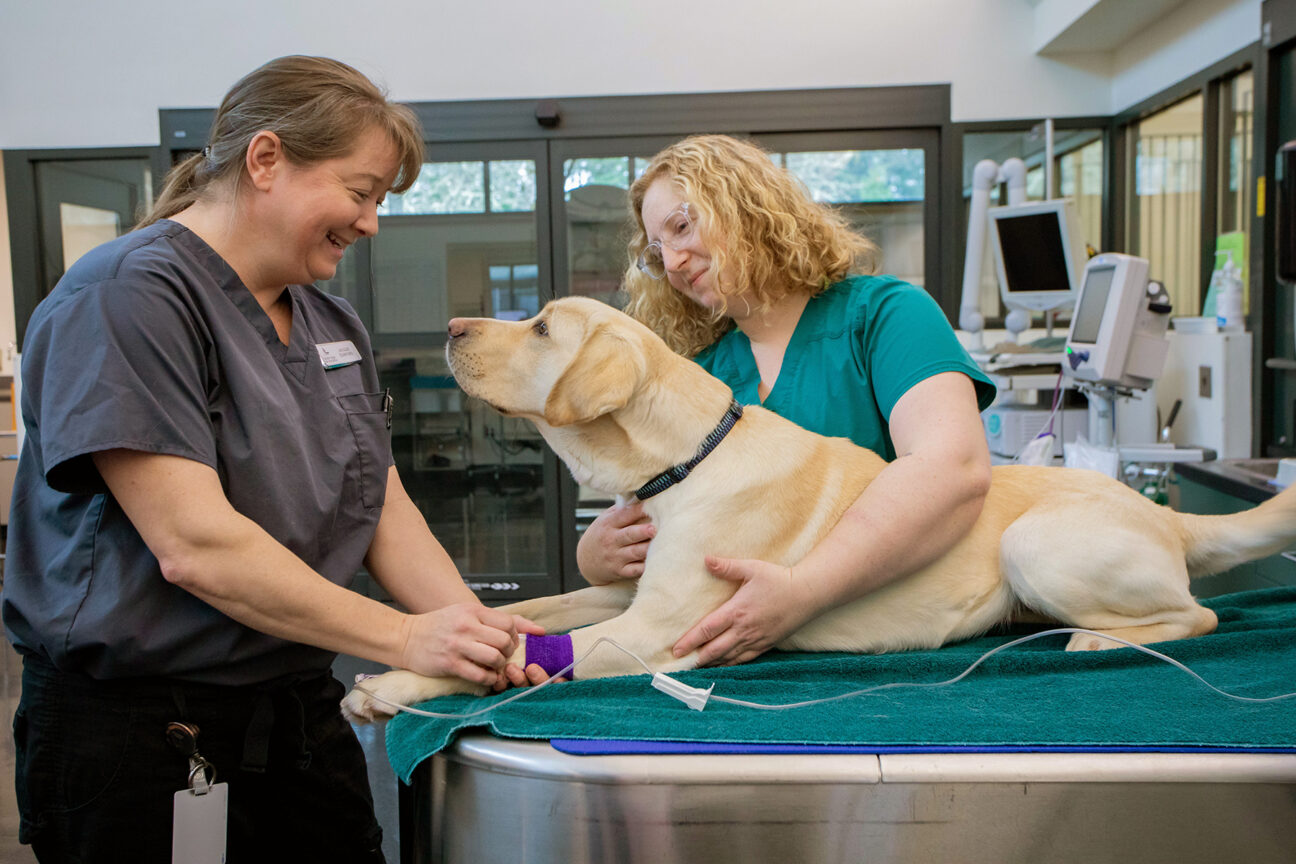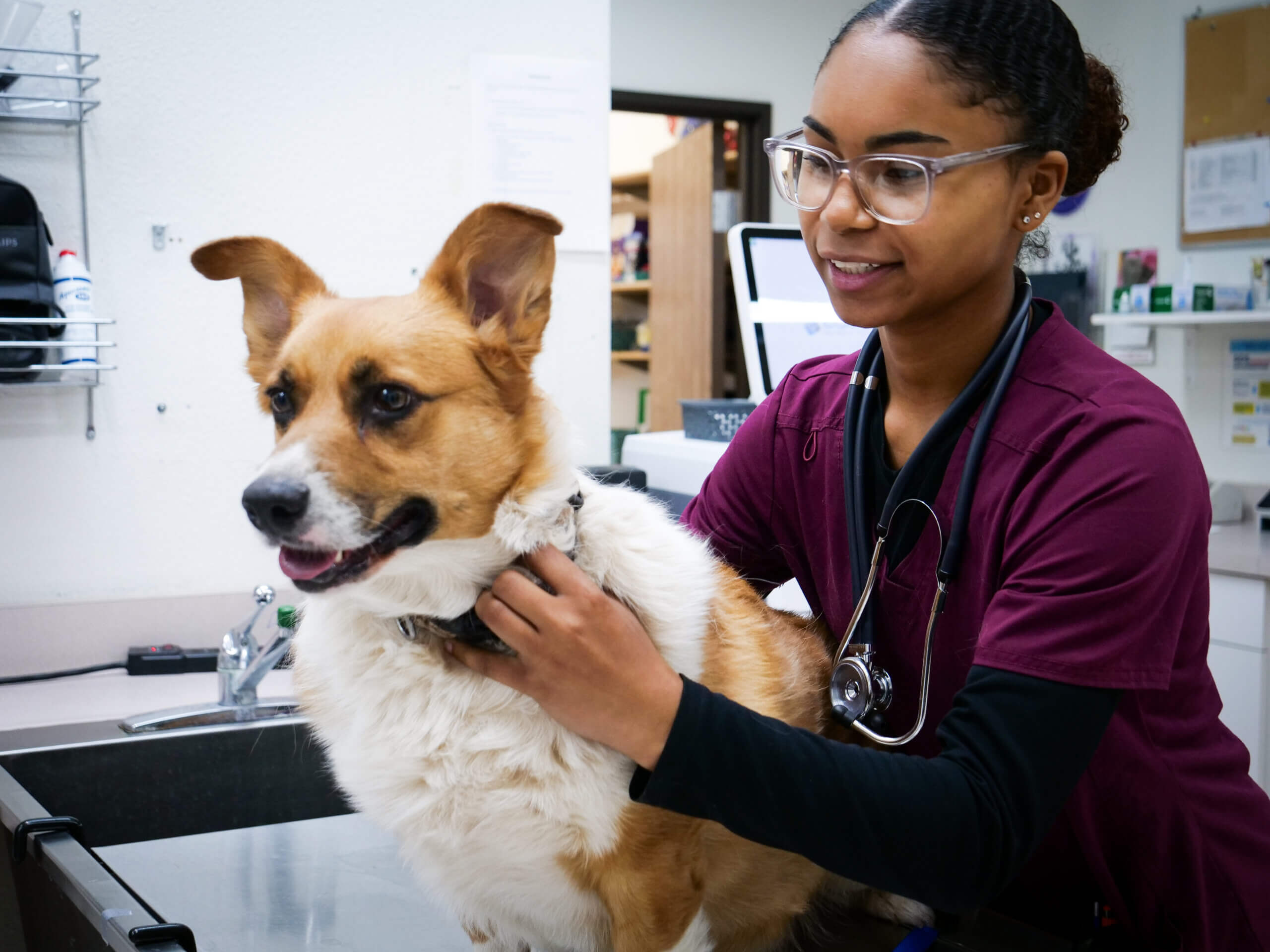How to Find an emergency vet near me Before You Actually Need One
How to Find an emergency vet near me Before You Actually Need One
Blog Article
All Regarding Vet Surgical Treatment: Understanding the Value of Specialist Care for Your Pet dogs
Veterinary surgical treatment is an essential element of pet medical care. It encompasses numerous procedures, from routine optional surgeries to urgent interventions. Understanding the ins and outs of these surgeries can aid animal proprietors make notified choices. The preparation, execution, and healing stages are necessary for guaranteeing the health of pets. With proper knowledge, proprietors can navigate the complexities of vet treatment. What elements should be thought about prior to a pet dog undergoes surgical treatment?
Kinds of Vet Surgeries
When a family pet requires surgical treatment, comprehending the various kinds of veterinarian surgeries can help animal proprietors make informed decisions. Vet surgical procedures can be generally categorized into 3 major kinds: elective, urgent, and emergency situation surgeries. Elective surgical treatments, such as spaying or neutering, are planned treatments that are not quickly life-threatening. Urgent surgical procedures, like those for foreign body elimination, have to be carried out quickly yet are not lethal in the minute. Emergency surgical procedures, such as those resolving severe trauma or interior blood loss, are vital and call for immediate attention.Additionally, surgical treatments can differ in complexity, ranging from minimally invasive laparoscopic procedures to a lot more extensive open surgical treatments. Each type of surgery brings its very own dangers and recuperation processes. Recognizing these groups permits pet dog proprietors to engage in significant discussions with veterinarians, resulting in far better outcomes for their precious pet dogs.
Preparing for Your Pet dog's Surgery
Planning for a family pet's surgery involves a detailed list to assure all fundamentals are covered. Effective communication with the veterinarian is essential for understanding the treatment and any essential pre-operative actions - canine tplo surgery. Furthermore, having clear post-operative treatment directions will help proprietors supply the very best assistance for their recuperating family pets
Pre-Surgery List Essentials
Assuring a smooth surgical experience for a pet needs mindful prep work and focus to detail. A pre-surgery checklist is vital for pet owners to comply with. Validating the set up surgery date and time is essential. Owners should likewise confirm that their family pet has fasted according to the veterinarian's directions, usually for 8-12 hours prior to surgical procedure. Gathering necessary clinical records, consisting of vaccination background, is very important for the veterinarian's review. It is also suggested to prepare a comfy room at home for the animal's recovery after surgical treatment. Owners ought to have a strategy for transportation to and from the vet center, making sure that the pet dog is protected and comfortable throughout the journey. Adhering to these steps can greatly enhance the medical experience.
Communicating With Your Vet

Effective interaction with the vet is vital for a successful surgical experience for family pets. Owners should be prepared to discuss their animal's case history, including any pre-existing problems, medications, and allergies. This info assists the veterinarian assess threats and customize the surgical strategy accordingly. In addition, pet dog owners should ask inquiries concerning the treatment, anesthetic, and anticipated results to ensure they completely comprehend the process. Clarifying any questions can reduce anxiety for both the pet dog and the owner. It is additionally crucial to connect any behavior changes or problems observed in the animal leading up to the surgery. Ultimately, clear dialogue fosters trust and partnership, making sure that pets receive the best possible treatment during their medical trip.
Post-Operative Care Directions
After discussing the operation with the veterinarian, pet dog proprietors ought to concentrate on post-operative treatment guidelines to facilitate a smooth recovery for their pet dogs. These instructions normally consist of keeping an eye on the surgical site for indicators of infection, such as inflammation or discharge. Pets may require to be kept one's cool and restricted to avoid extreme motion that could disrupt healing. Pain management is crucial, so proprietors need to adhere to the veterinarian's advice on administering medications. Additionally, nutritional limitations may be suggested to avoid stomach upset. Routine follow-up appointments are essential to guarantee appropriate healing and deal with any kind of issues. By adhering to these post-operative care instructions, family pet proprietors can greatly add to their pet dog's recovery and total wellness.
The Surgical Process Explained
The surgical process for pets encompasses critical steps that assure their safety and security and healing. Pre-surgery prep work are crucial for decreasing dangers, while post-operative treatment standards play an essential duty in advertising recovery. Recognizing these elements assists family pet owners navigate the surgical experience better.
Pre-Surgery Preparations
Before a family pet goes through surgical procedure, a number of important prep work must take location to guarantee a risk-free and successful procedure. Initially, a complete veterinary exam is vital to evaluate the pet's overall health and determine any prospective dangers. This may include blood examinations, imaging, or various other diagnostics. The veterinarian will certainly likewise talk about anesthesia choices customized to the animal's specific needs. In addition, pet proprietors are commonly instructed to keep food and water for a defined time prior to surgical treatment to reduce the danger of problems throughout anesthesia. It is very important for owners to give a complete medical history, consisting of any medicines or allergies, guaranteeing the medical group has all required details. Appropriate interaction and adherence to pre-surgery guidelines can considerably boost the outcome of the procedure.
Post-Operative Treatment Guidelines
Proper post-operative treatment is essential for ensuring a pet's recovery complying with surgical procedure. After the treatment, animals should be kept track of carefully for any kind of indications of difficulties, such as too much bleeding, swelling, or unusual habits. It is essential to comply with the veterinarian's guidelines pertaining to medications, including painkiller and prescription antibiotics. Pet dogs must be kept in a peaceful, comfortable environment to minimize stress and promote healing. Limiting task is essential; short, leashed walks might be necessary, however jumping or running must be avoided. Routine follow-up appointments should be set up to evaluate the recovery procedure. In addition, the medical website must be kept clean and completely dry, with any kind of indicators of infection reported to a veterinarian promptly. Adhering to these standards boosts recuperation her response outcomes.
Anesthetic and Pain Monitoring
Effective anesthesia and pain management are essential elements of veterinary surgery, guaranteeing that pets continue to be comfy and safe throughout the procedure. Vets assess each pet dog's private requirements, thinking about aspects such as age, weight, health and wellness standing, and the type of surgical treatment being performed.Anesthesia methods generally consist of a combination of pre-anesthetic medicines, induction representatives, and inhalant anesthetics, permitting specific control over the pet's level of consciousness. Monitoring throughout surgery is essential; vets continually observe important indicators to attend to any possible difficulties promptly.Pain management techniques may include opioids, non-steroidal anti-inflammatory drugs (NSAIDs), and anesthetics, tailored to the family pet's details scenario. This diverse technique helps minimize discomfort and promotes a smoother medical experience. By prioritizing effective anesthetic and discomfort management, veterinary experts improve the overall well-being of pet dogs going through surgeries, ensuring they get the highest criterion of care.
Post-Operative Treatment and Recovery
Complying with surgery, the focus moves to post-operative care and recuperation, which is important for guaranteeing a family pet's secure return to normal tasks. During this duration, family pets call for a silent, comfy setting to help recovery. Proprietors need to carefully monitor their animals for any indications of discomfort or uncommon behavior.Veterinary guidelines frequently include certain directions connected to drug administration, injury treatment, and nutritional modifications. It is essential to abide by these suggestions to decrease issues and promote healing. Family pets might require to be limited from energetic tasks, such as running or leaping, during their healing period (canine tplo surgery).Regular follow-up appointments with the veterinarian permit tracking of the pet's progression and prompt changes to the treatment plan. Giving emotional support and companionship can likewise improve a pet dog's recuperation experience, helping to minimize tension and anxiousness. On the whole, thorough post-operative care plays a significant function in attaining a successful recovery
Acknowledging Issues After Surgical Procedure
Exactly how can animal owners recognize issues after surgery? Recognition of particular indications is crucial for guaranteeing the health of animals during recuperation. Common indicators include extreme swelling, inflammation, or discharge at the surgical website, which might symbolize infection. Additionally, persistent discomfort, indicated by whimpering or unwillingness to relocate, ought to prompt instant interest. Adjustments in hunger or water consumption can likewise indicate problems; a decrease in these habits may signal discomfort or distress.Moreover, animal owners ought to monitor their family pets for any type of unusual habits, such as sleepiness or problem breathing, as these can be indications of severe problems. Vomiting or diarrhea complying with surgery may call for immediate vet analysis. Identifying these issues early can greatly impact a family pet's recuperation procedure, stressing the value of watchfulness and punctual interaction with a veterinarian for any type of worrying signs and symptoms.
The Duty of Vet Specialists in Surgical Care
Veterinary specialists play a crucial role in making sure the safety and security and success of procedures for pets, specifically complying with surgery when keeping track of and care are critical. These specialists include veterinarians, vet specialists, and assistance personnel, every one of whom add specialized abilities to the medical process.Before surgery, vets carry out thorough analyses to analyze the pet dog's wellness, guaranteeing that any type of hidden problems are handled. Throughout the procedure, the medical team supplies anesthesia, keeps clean and sterile environments, and monitors vital indications, all important for minimizing risks.Post-operative care is just as significant; vet specialists observe for problems, handle pain, and guide proprietors on try this website recovery practices. Their competence site allows them to identify very early indicators of distress or infection, making sure prompt treatment. Eventually, the joint initiatives of vet experts in medical treatment foster a secure setting, advertising the well-being of family pets throughout the surgical journey.

Often Asked Inquiries
How Do I Pick the Right Vet Specialist for My Animal?
Selecting the appropriate vet specialist includes investigating qualifications, reading testimonials, and examining the facility's environment. It is vital to reflect on the cosmetic surgeon's experience with certain treatments and their interaction design when making a choice.
What Are Typical Misconceptions About Vet Surgeries?
Typical misconceptions regarding veterinarian surgical procedures include ideas that they are constantly high-risk, unnecessary, or only for emergency situations. Lots of family pet proprietors underestimate the benefits of precautionary procedures and the skill entailed in veterinary surgical treatment.
Just How Much Will My Family pet's Surgical procedure Expense?
The expense of a family pet's surgical treatment can differ considerably based upon elements such as the sort of treatment, the vet's experience, and geographical location (tplo surgery). Generally, expenditures range from a couple of hundred to several thousand dollars

Can My Family Pet Eat Prior To Surgery?
Prior to surgical procedure, it is normally recommended that pets avoid consuming for a details period. This fasting helps in reducing the risk of problems throughout anesthetic. Proprietors ought to consult their vet for exact instructions customized to their pet dog's requirements.
What if My Family Pet Has Pre-Existing Health Issues?
When a family pet has pre-existing health conditions, it's essential for the veterinarian to analyze these factors prior to surgical treatment. This examination guarantees suitable precautions are taken, lessening risks and maximizing the animal's total security during the procedure.
Report this page